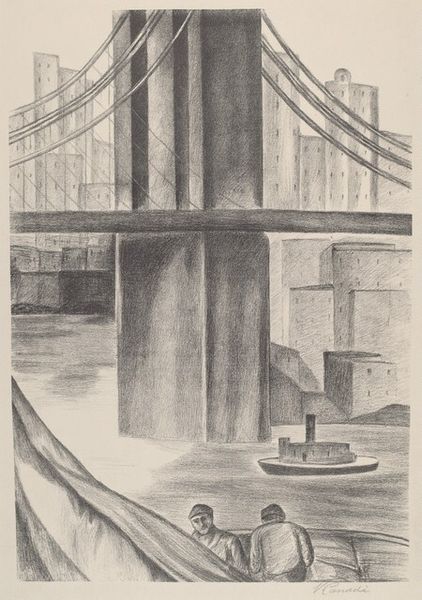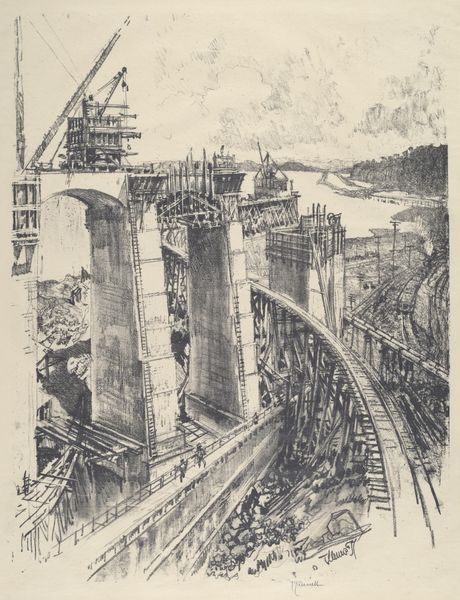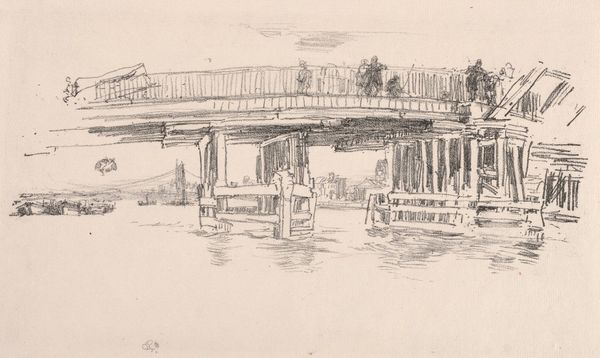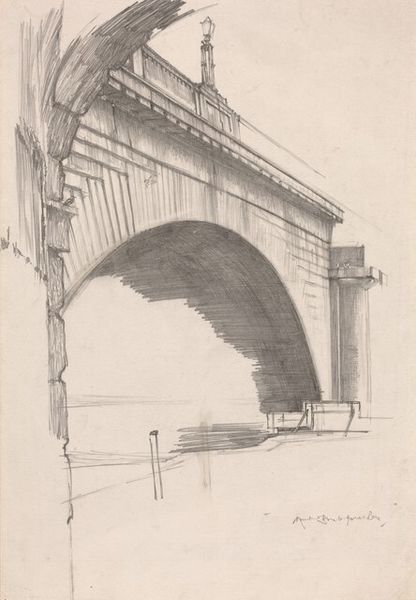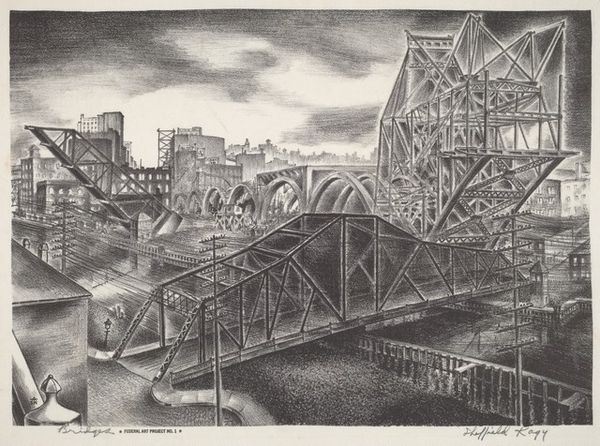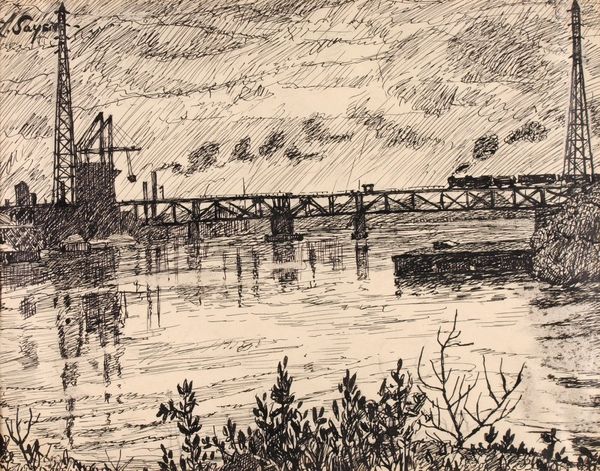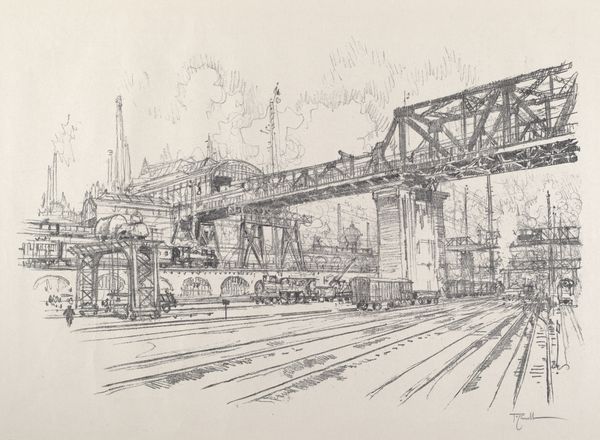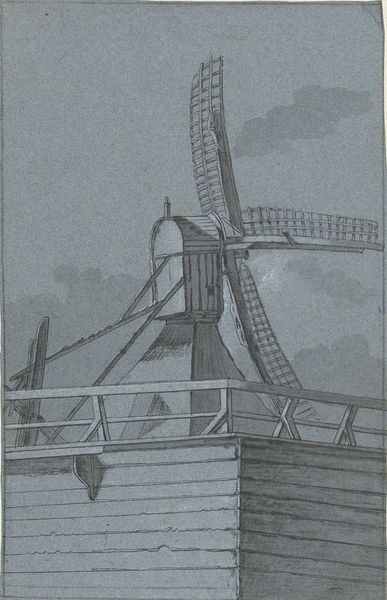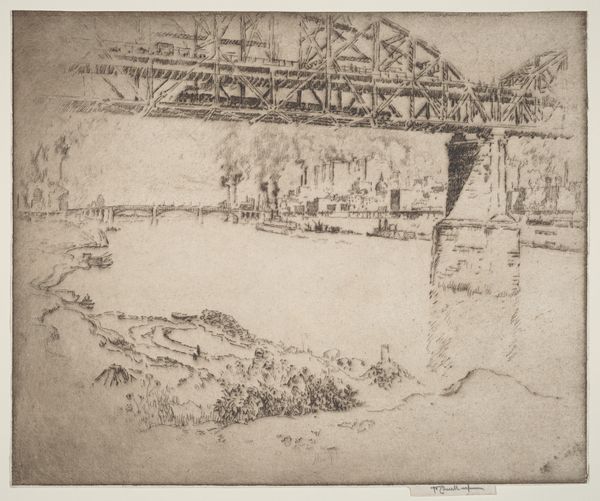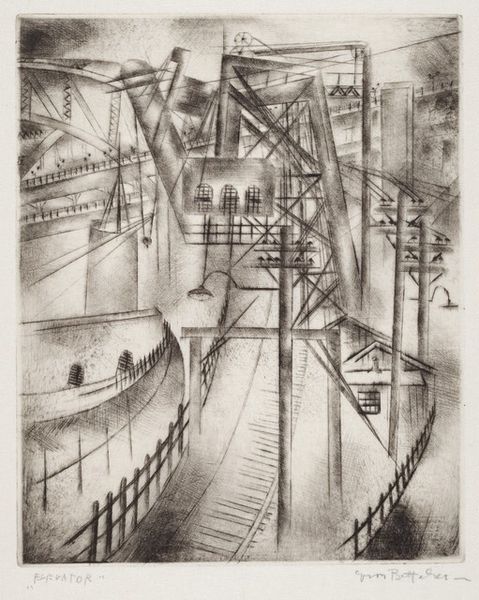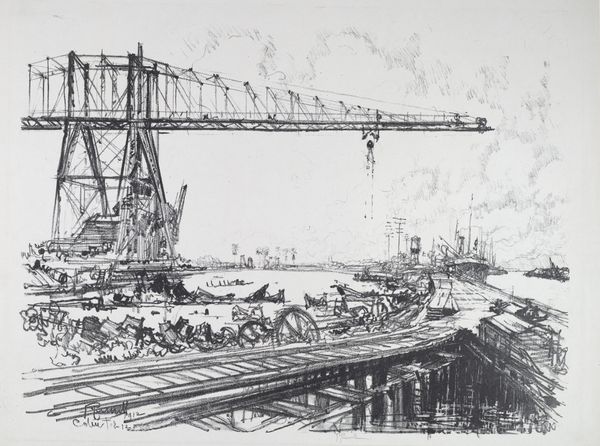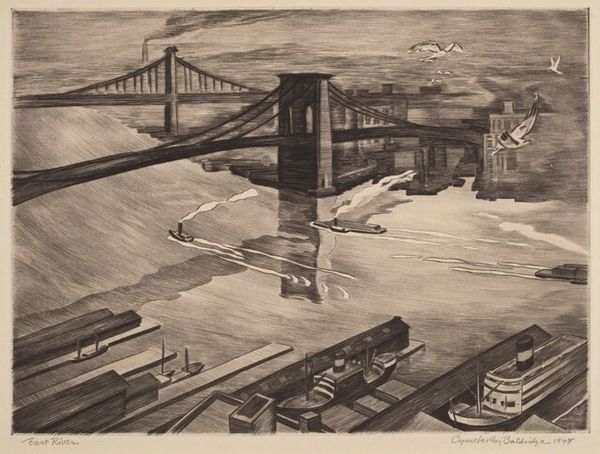
drawing, print, graphite
#
precisionism
#
drawing
# print
#
geometric
#
graphite
#
cityscape
#
realism
Dimensions: image: 310 x 209 mm sheet: 466 x 324 mm
Copyright: National Gallery of Art: CC0 1.0
Curator: This is "West Anchor to East," a 1936 graphite drawing by Otis William Oldfield. It exemplifies Precisionism through its depiction of urban and industrial motifs. What's your immediate reaction to it? Editor: It’s starkly beautiful. The heavy use of graphite gives it this very tangible, almost somber feeling. You can practically feel the grit and weight of the bridge looming overhead. Curator: The bridge is clearly the focal point, but I am interested in the construction materials depicted in the lower portion of the drawing, particularly because the print medium emphasizes textures so meticulously rendered by Oldfield. Editor: Absolutely. The sharp focus and high contrast draw attention to the construction itself. Given the context of the 1930s, this focus resonates with the period’s emphasis on industry, progress, and also perhaps speaks to the collective effort needed to overcome economic hardship. Curator: That collective effort would depend directly on the skill and availability of industrial laborers, often at great personal cost, don’t you agree? I find myself contemplating what it must have been like to build it. Editor: And whose stories weren’t told in the celebration of progress? This piece opens questions about marginalized workers whose labor fueled this rapid industrial expansion, whose experiences are muted or simply absent. Curator: Oldfield certainly makes a statement about modernism's relentless march and erasure of boundaries between industry and artistry through sharp lines, repetition, and almost photographic detail. There’s little romance in this cityscape; more a document of its stark physicality. Editor: Which might not be accidental, right? Placing these colossal structures alongside those small figures almost accentuates a power imbalance. It suggests an individual struggle against overwhelming industrial forces of the era. It’s less a celebration and more of a critical commentary, wouldn’t you say? Curator: Indeed. The scale of labor compared to human presence speaks volumes. Well, thinking about labor conditions of the 1930's, perhaps, shifts the focus from architectural marvel to a stark reminder of society and structure, too. Editor: Agreed. Seeing this work in person definitely provokes a critical questioning of both progress and societal equity during that turbulent era, offering space for continued dialogues on identity, labor, and resilience today.
Comments
No comments
Be the first to comment and join the conversation on the ultimate creative platform.
